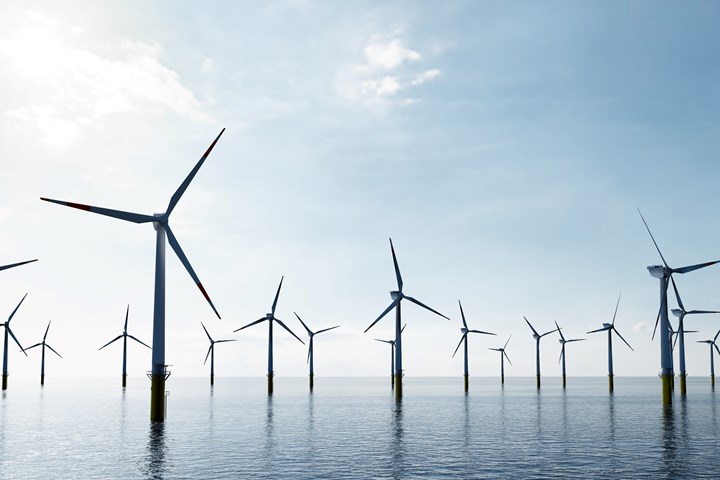Joint declaration to lead European offshore wind capacity to 150 GW by 2050
Germany, Belgium, the Netherlands and Denmark cooperate to increase wind capacity, expand large-scale energy hubs and explore green hydrogen, all of which will affect carbon fiber demand.

Photo Credit: Getty Images
On May 18, the heads of state from Germany, Belgium, the Netherlands and Denmark have signed a joint declaration to make the North Sea a green powerhouse for Europe. Together, the four countries expect to increase the capacity of offshore wind at least tenfold by 2050 — starting with 65 gigawatts (GW) by 2030, and finishing at 150 GW by 2050. This will reportedly supply up to 230 million European households with green power, reduce fossil fuel consumption and promote the deployment of renewable energy for more energy resilience.
The wind energy industry is considered to be the largest consumer by volume of carbon fiber, used in spar caps and spar structures in increasingly lengthening blades, projected to reach 115-120 meters long by 2035. At CompositeWorld’s 2021 Carbon Fiber Conference, for example, Tony Roberts and Dan Pichler estimated that wind turbine blades consumed 28,000 metric tons (MT) of carbon fiber in 2021. Their forecast for that to double to 54,000 MT by 2026 was before this latest capacity increase, however.
“This summit is nothing short of historic,” Minister of Climate and Energy Dan Jørgensen says. “We have agreed on an ambitious declaration which will not only supply the whole of Europe with green electricity, but which in the long run can also contribute to the production of green fuels for ships, aircraft and lorries. All four countries see the enormous potential that the strong winds of the North Sea offer us, and we are ready to reap it.”
To achieve these numbers, several actions will take place:
- Belgium will establish 5.8 GW offshore wind capacity by 2030 and 8 GW by 2040.
- The Netherlands will establish about 21 GW offshore wind capacity around 2030.
- Germany will establish at least 30 GW offshore wind by 2030, 40 GW by 2035, and 70 GW by 2045.
Denmark expects to establish what is says will be the world’s first multi-phased and largest energy island in the North Sea, a hybrid project combining offshore wind generation and cross-border interconnection. It will have an initial capacity of 3 GW offshore wind by 2033 and connections to Belgium and Denmark, — between both the Danish Energy Island and the Belgian Energy Island — Belgium and Germany — interconnected by the Bornholm Energy Island in the Baltic Sea — and Belgium and the Netherlands, connecting the energy island in the Danish EEZ to a Dutch energy hub, which is priority.
Denmark is also engaged with Germany on hybrid renewable energy projects in the North Sea and the Netherlands for offshore green hydrogen production.
Read the entire Esbjerg Declaration here.
Related Content
-
SuCoHS project: Advancing composite solutions for parts with high thermal and mechanical loads
New materials, structural concepts and manufacturing using sensors for composites that resist fire, temperature and loads while providing weight and cost savings versus metals.
-
Bioabsorbable and degradable glass fibers, compostable composite parts
ABM Composite offers sustainable options and up to a 60% reduction in carbon footprint for glass fiber-reinforced composites.
-
High-performance, high-detail continuous 3D-printed carbon fiber parts
Since 2014, Mantis Composites has built its customer and R&D capabilities specifically toward design, printing and postprocessing of highly engineered aerospace and defense parts.
















